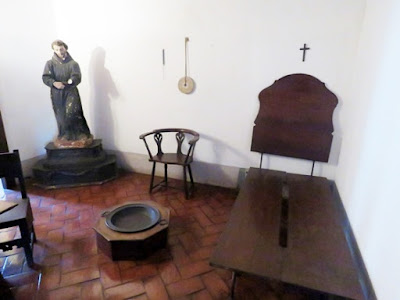Mafra
A visit to Lisbon will also include sightseeing at the neighbour towns: Sintra, Obidos, Cascais, Sesimbra, Mafra, Evora and Serra da Arribida (if you drive). Sintra and Obidos are packed with tourists. Evora is quite distant. Marfa is closer and relatively quiet. It is a pretty town and has one of the largest and most extravagant palaces in Europe, the Palacio de Mafra.
Mafra Palace was constructed by King John V in thanks for having a healthy heir, Maria Barbara who became the queen of Spain. The king married to Queen Maria Anna. They did not have healthy children. So he vowed to construct a great monastery if he was provided an heir. The wish has worked and they had 6 children further more.
Originally, the construction was meant for a convent of housing 13 friars. But the influx of gold from Brazil allowed the project scope vastly expanded for 330 friars. State rooms were added to the original design. The convent became a palace and as a hunting retreat for the royal family members. There are over 1,200 rooms but only a handful were open to the public. It includes the convent's infirmary (hospital), basilica, royal rooms and a stunning Rococo library.
The basilica is situated at the middle of the palace, in between the King's and Queen's tower. It enabled the royal couple to attend church services without leaving their royal quarters on the higher level. Alternatively, one can also enter the church on the lower level. It is immense and full of sculptures from Italy and Portugal. Matching its extravagant nature, it contains 6 beautiful organs.
After purchasing the entry ticket, the first sightseeing point is the beautiful internal yard. Immense empire building in lush green. At time of visit, photo taking of eagles and owl was offered to gather money to protect the birds in the wild.
The first to be seen upon entering the palace is the place where the monks reside and the infirmary. Visitors will see the simple furnished monks' cells, a kitchen with historical utensils, a small dispensary and the cubicles in a long ward for the injured and sick. At the end of the ward is a chapel. The beds were pulled into the centre of the ward so that patients could see and hear mass on every Sunday.


 Following are a number of royal rooms with the old-day furniture, magnificent paintings / fresco and portraits of the royal family of different generations. Among all, the first is the flamboyant Throne Room, where the king met with the official audiences. Other rooms include the royal couples' bedroom, music room, hunting room, etc.
Following are a number of royal rooms with the old-day furniture, magnificent paintings / fresco and portraits of the royal family of different generations. Among all, the first is the flamboyant Throne Room, where the king met with the official audiences. Other rooms include the royal couples' bedroom, music room, hunting room, etc.The library is the highlight of the palace. It rivals the grandeur of the library of the Melk Abbey in Austria. It is 88m long, 9.8m wide and 13m high. The floor is covered with tiles of rose, grey and white marble. The wooden bookshelves in two rows are situated on the sidewalls, separated by a balcony and a wooden railing. They stores over 36,000 leather-bound volumes, attesting of the extent of western knowledge between 14th and 19th century. The library is also renowned for bats protecting the books from insect damage.
The Palace of Mafra is opened from Wednesday to Monday, from 9.00 to 18.00. The town can be reached by bus departing from Campo Grande which is also a major underground station. The bus journey from Lisbon to Mafra is about 40 minutes. The visit lasts about 2 hours, depends on how deep you will like to go into. Afterwards, one can take the same bus further to Ericeira to enjoy beaches, water activities and sumptuous seafood.

















Comments